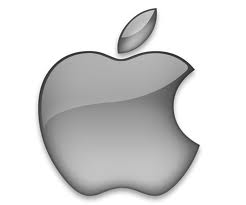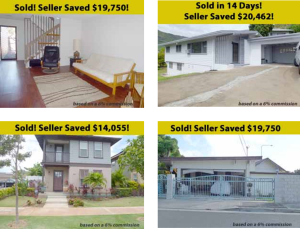Let’s think about how you market yourself, and let’s think about it by looking at Apple.
 How did Apple – the second generation, Steve Jobs led Apple – get so big? Three Things: (Simplifying a lot)
How did Apple – the second generation, Steve Jobs led Apple – get so big? Three Things: (Simplifying a lot)
Positioning, Posturing and Validation
Positioning: while Microsoft (the competition Apple identified and went after) kept pitching practicality and a computer in every household, Apple went after elite and hip, even artistic. The ‘Here’s to the Crazy Ones’ commercial is brilliant and effective. The positioning wasn’t ‘we are just like them only better,’ it was ‘we are completely different and so are you!’
Posturing: While Microsoft focused on the unseen aspects of personal computing (operating systems and software), Apple controlled hardware as well, which gave them the ability to create a style. There is no Microsoft style. There is a Sony style and an HP style . . . and an Apple style. Apple went after style with class and consistency: all Apple devices look somewhat similar. I guess there is good style and bad style but I also know that effective styling is a matter of marketing. (I mean, look at what the fashion world has us believing is cool today: it’s a kind of homeless chic! We’ll pay hundreds for an outfit that makes us look like we live on the streets!) So, Apple used its elite and hip positioning (coupled with consistency of design) to create a style that people were proud to wear.
Validation: In addition to its hip and cool marketing, and its style, Apple nurtured an army of users to broadcast loudly how much better their devices worked than Microsoft’s (again, Microsoft made no devices, really, just software). While Windows syste ms were famous for crashing (remember Vista?) and prone to attack, Apple users went on and on about their never-fail systems. Whether on Internet postings, Facebook, Twitter, or verbally at the office or the soccer game, Apple users waved their stylish devices and proclaimed them (and themselves) to be superior.
We could go on about this bit of history but let’s stop and think about your business now.
How are you positioning your Help-U-Sell company? Are you trying to fit in? Trying to not upset your friends at the Board? Imagine how that would have worked for Apple! You have an identity and it is very different from the rest of the pack. It is SAVINGS. Just as Steve Jobs knew that everyone wants to think of themselves as cool and hip, Don Taylor (our founder) knew that everyone wants to pay the least possible for good service. That’s why we are positioned as the company that saves consumers money selling real estate. Savings begins with a streamlined, broker-centric operation coupled with set fee pricing.
I believe you can undermine the brilliant positioning of Help-U-Sell as the company that SAVES. I’ve seen it happen over and over when a broker looks at what everyone else is doing and wonders, ‘why not me?’ Here are three underminers that will erode your position:
Having more than three Set Fees. Of course, in theory, ONE should be sufficient. But we’ve learned that properties on the low end of the market need special pricing and, sometimes, those at the top do as well. But five fees? Or a fee that graduates every $50,000 – $100,000? That’s just a tired, old-fashioned commission in a very bad disguise.
Hiring agents on commission splits to take listings. That’s what your competition does, and it does not work at Help-U-Sell. If your Set Fee Pricing is correct for your market, you cannot afford to split commissions on the Listing Side with anyone. Once your company is established and you are too busy to do the listing business yourself, an assistant (someone paid a set fee or salary) may start to help on the listing side. Remember: your competition pays huge splits to agents to go out and get listings because they rely on agents to market their business. YOU market your business. YOU create the leads. Your commissioned agents are there to help you take care of the leads you have created on the buyer side.
Mixing percentages in with set fee pricing. Something like: Our set fee is $5,950 (but if we bring the buyer it’s a flat 3 1/2 % and if it’s sold through the MLS it’s 4%). Your identity is SAVINGS, and the way you get there is through set fee pricing (and a broker-centric business model). When you mix in percentage commissions in your pricing you just look like a bait and switch come-on proposition. The only place percentages belong in your pricing is on their side, when an outside broker brings the buyer. Then it’s their nonsensical percentage based commission the seller sees on the HUD-1, not yours.
Just as posturing for Apple was about how that company marketed itself, so your posturing is about how you tell your story to consumers. You are a geographically focused, target marketing business. You study the broad market, pick neighborhood targets where you anticipate the highest rate of return and market to those specific targets. Compare that with what the broker down the street does. Remember s/he delegated the marketing of the company to the agents and expects them to go out and take whatever listing they can get in whatever location.
Your posture is not just where you market, but what you market. While your competition is advertising ‘charming’ bungalow in ‘immaculate’ condition in ‘park-like’ settings, you’re marketing the fact that you saved John and Mary $8,325 in commissions when they sold their home. Think about that for a moment. They are marketing for buyers. You are marketing for sellers (because you know that if you have enough sellers, enough listings, the buyers will flock to you).
Validation: This is really why I wanted to write this post. Yesterday I saw Richard Cricchio posted photos of four ‘Sold and Saveds’ on his company’s Facebook page. Bravo! ‘Sold and  Saveds’, along with our customer testimonials (the ones you ask for at every closing), are how we validate what we do. If you are not blanketing your marketplace with proof that people use your service, it works and they save, you are cutting your effectiveness (and your bottom-line) greatly. I was struck by Richard’s ‘sold and saveds’ posting because it was graphic. I didn’t have to read much of anything to get the message that he’d saved people money. Others have used Facebook for ‘Sold and Saveds’ (and I applaud them, too), but Richard’s post had great impact.
Saveds’, along with our customer testimonials (the ones you ask for at every closing), are how we validate what we do. If you are not blanketing your marketplace with proof that people use your service, it works and they save, you are cutting your effectiveness (and your bottom-line) greatly. I was struck by Richard’s ‘sold and saveds’ posting because it was graphic. I didn’t have to read much of anything to get the message that he’d saved people money. Others have used Facebook for ‘Sold and Saveds’ (and I applaud them, too), but Richard’s post had great impact.
Recap. Positioning: what is your identity? Posturing: how do you market that? Validation (Your silver bullet): How are you getting people to crow about the good service you provided (and the money you saved them)?
I think it fascinating that while Apple built its success as the anti-Microsoft (just as you will build yours as the anti-6% Realtor), they somehow missed the fact that the BIG competition was Google. Easy to miss, I think. At its inception, Google was just a search algorithm cooked up by a couple of grad students. Who knew that from that, they would someday own the Internet, have the number one browser, and have more devices running their operating system than any other?
